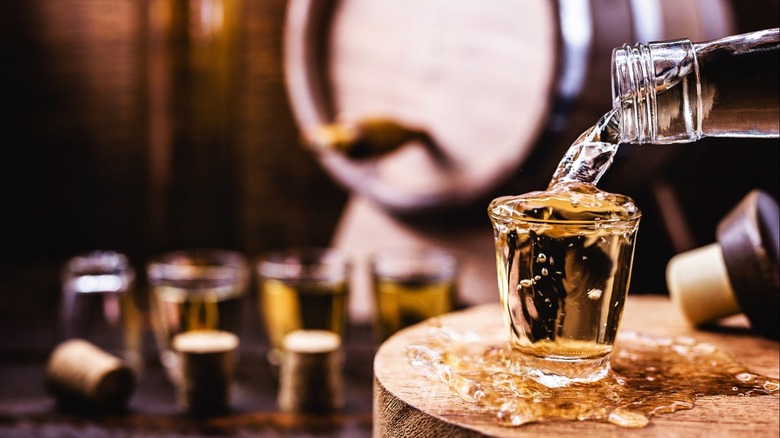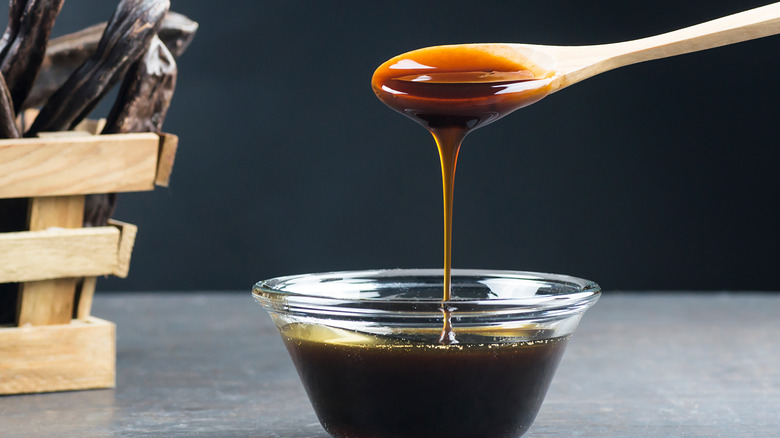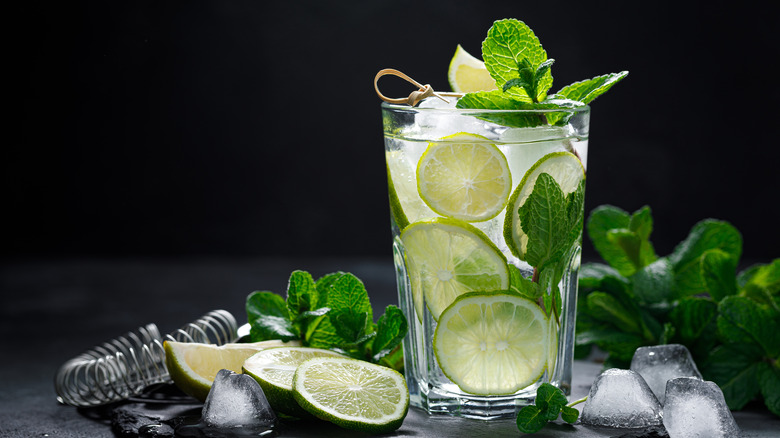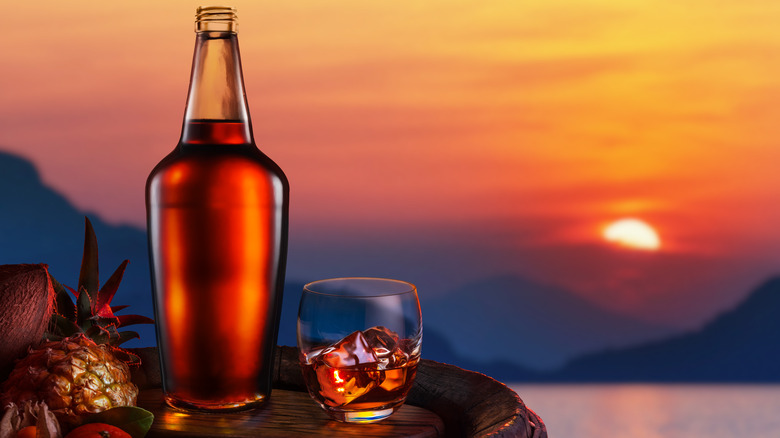Most Rums Are Still Made With This Old-Fashioned Ingredient
Rum is a staple in many liquor cabinets, classic cocktails, and stalwart libations. But what exactly is it? What is its history? What it is made of?
To put it simply, rum is a spirit made with a "sugar base," which can include "fermented sugarcane juice, sugar syrup, molasses, or a liquid derivation of sugarcane," as noted by MasterClass. Rum is oftentimes made from directly fermented sugarcane juice, sugarcane syrup that's then fermented, or molasses (derived from sugarcane juice) which is then fermented. Furthermore, it is about 40% ABV, or around 80 proof, as stated by MasterClass, which notes that rum is the end result of a form of sugar that is then "fermented, distilled, and then aged."
The sugarcane that produces rum is most often grown throughout the West Indies, the Caribbean, Puerto Rico, Hawaii, and parts of Florida. Yeast is used to ferment the sugarcane juice (or molasses) before the mixture is distilled and aged.
Is molasses a main ingredient in rum?
Almost all rums are molasses-based, per The Rum Authority. While some may associate sugarcane with rum, molasses is the true primary ingredient. Southern Living states that molasses "is a thick, dark syrup made during the sugar-making process," essentially a byproduct of crushed and processed sugar cane or sugar beets.
Per Flaviar, molasses is better for rum-making than plain sugar or sugar cane juice not just from the laborers' perspective but also from an environmental one. Flaviar states that one of the reasons molasses is more environmentally friendly is because "the ethanol [from sugarcane] has been found to burn cleaner than fossil fuels."
Some distillers let the liquor ferment in open, large metal vats and let the yeast ferment naturally, while others may use more controlled operations. Some rums are also distilled numerous times. There are also varying types of molasses, so a blackstrap will produce a very different rum than one made from dark molasses, per The Manual.
What does rum taste like?
The Spruce Eats notes that rum's "underlying flavor profile ... is a sweet, toasted sugar," which helps to encapsulate the flavor notes you might pick up on when sipping. SF Gate notes that some rums also have notes of pepper, chocolate, honey, or ginger. The terroir of where the sugarcane is grown causes flavor varietals and differing notes in the rum itself, too. Rum derived from sugarcane grown in Guatemala will be exponentially different from sugarcane grown in Puerto Rico, per Flaviar.
Rum is also used in piña coladas, daiquiris, Barbadian rum punch, salted pecan, mojitos, mai tais, and many others. It pairs beautifully with lime. Rum is also great in hot cocktails, such as a classic buttered rum, per The Spruce Eats. Some other classics are rum and coke, dark and stormy, painkiller, and a yellowbird. Many bartenders and mixologists are also experimenting with these flavors, deepening and modernizing the classics and repurposing them in new ways.
MasterClass notes that there eight distinctive styles of rum: light, gold, dark, black, spiced, rhum agricole, cachaça, and over-proof. Each has its own flavor profile, color, strength, body, and additional spices. Each variation complements a certain type of drink.
Rum's painful history
The Manual states that enslaved people were the "main consumers" of molasses, the primary byproduct of the sugar-making process. There was so much molasses, though, that most of it went discarded — until someone thought to ferment it and turn it into a liquor. In 2017, Food & Wine published a deep-dive into rum's problematic past, noting that it "has a fraught history mired in colonialism, slavery, economic oppression, and organized crime."
Enslaved people on Barbadian sugarcane estates lasted until the 1833 Slavery Abolition Act of Britain, although many were still "forced to continue working" for years afterwards. Liquor.com states that "today, the colonizer influencer within the rum world manifests far beyond the production side of the industry," acknowledging that "rum seminars" oftentimes contain all-white panelists, while many distilleries and brands are also run by white men. Rum is also connected to "tiki" bars and drinks, which are often culturally exploitative.
In addition, many of today's top rum companies operated using the labor of enslaved people in the 1700s. So it could be wise to check out the history of the company you're buying from the next time you're stocking your liquor cabinet. Liquor.com notes that today, though, there are changes being made to diversify the rum industry and make amends for its hateful, painful history, including Black women being appointed as "master blenders" for mainstream rum companies, as well as new companies founded by people of color.



